The first paper from my MSc has just been published online in the Journal of Chemical Ecology! This study was a collaboration with colleagues Sean McCann (bioassay designer, photography/videography master, and all-around awesome assistant), Regine Gries (analytical chemistry wizard), Grigori Khaskin (synthetic chemist extraordinaire), and my supernatural supervisor Gerhard Gries. If you don’t have access to the journal, you can read the accepted manuscript here.
Here’s the story of the paper. Note: all photos and the video are copyright Sean McCann.
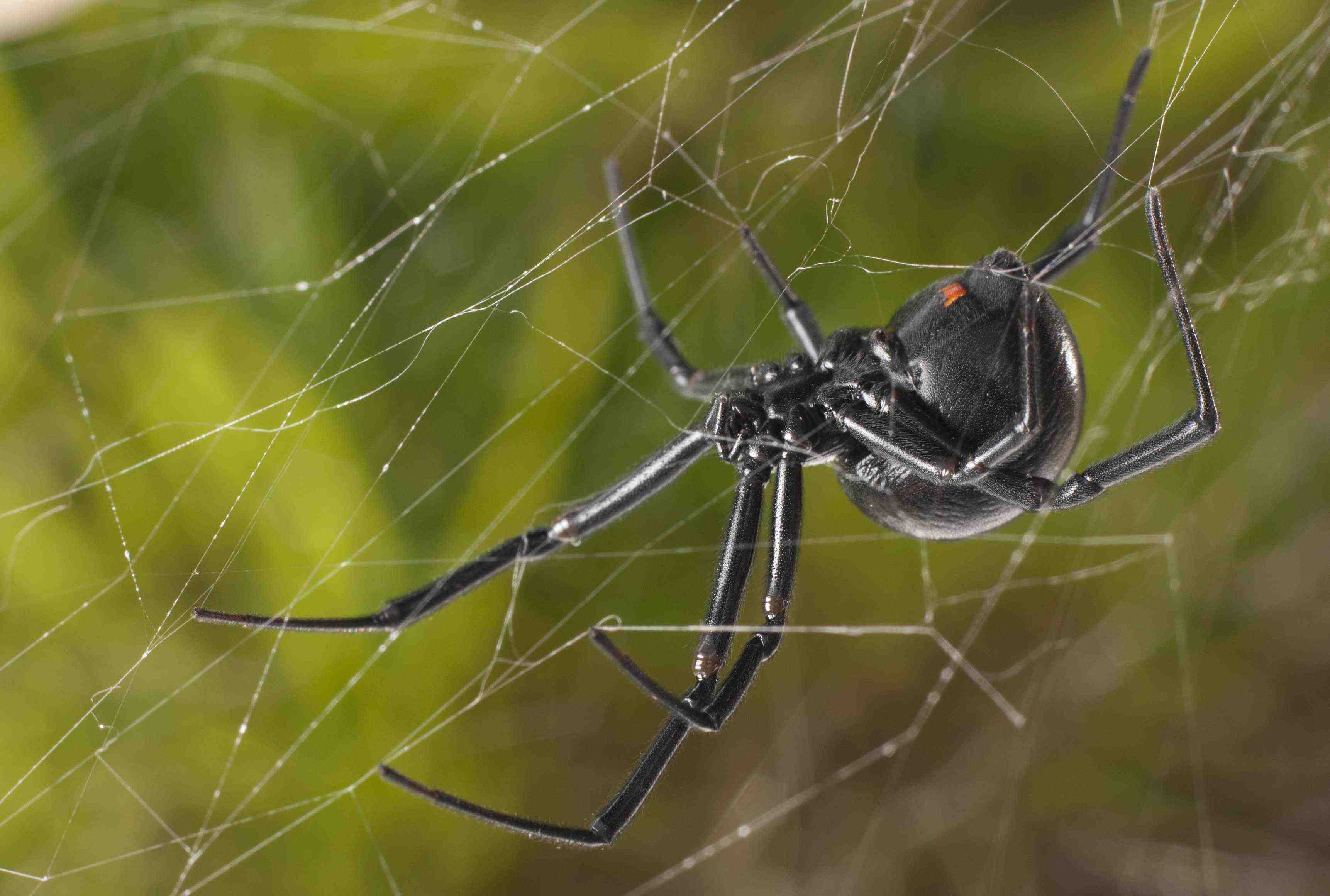
A female western black widow (Latrodectus hesperus) on her web. The silk is impregnated with sex pheromones that attract males and trigger courtship behaviour.
When I started my MSc, one of the goals for my research was to “find the pheromone” of the western black widow. What does that mean exactly? Well, we already knew that female black widows (spiders in the genus Latrodectus) produce sex pheromones that are somehow incorporated into the silk of their webs. These are sort of like chemical personal ads – they can provide information about things like the species, sex, age, mating history, and body condition of the individual producing them. When a male black widow matures, his only goal in life is to find a female to mate with. He abandons his web and follows his nose (not literally – we don’t really understand much about how spiders smell but their “noses” are most likely on their legs and pedipalps!) to a nearby female’s web. Given a choice among multiple available females, male black widows will go for a well-fed virgin based on the smell of her silk alone. Once he arrives at her web, he contacts the silk and “tastes” (again with receptors on his legs/pedipalps) the pheromone, which triggers courtship behaviour. We wanted to find out the chemical structure of the female’s sex pheromone.
We had a pretty good idea of what to expect, because other researchers had already identified a pheromone of the Australian redback spider (Latrodectus hasselti). It looks like this:
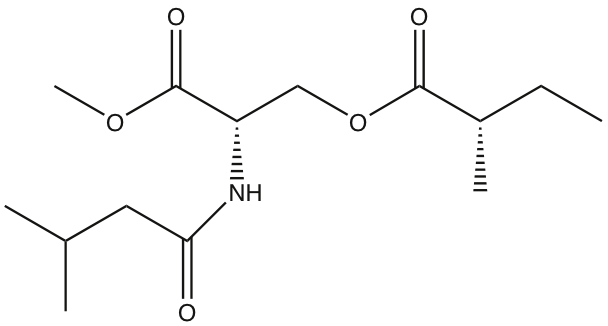
N-3- Methylbutanoyl-O-(S)-2-methylbutanoyl-L-serine methyl ester. Contact pheromone of Australian redback spider (Latrodectus hasselti) females.
Male western black widows are actually attracted to the webs of redback females, implying that the structure of the pheromone is similar, if not identical, in these two species. (It’s not necessary for males to discriminate between Australian redback and North American western black widow females in nature, because they never encounter one another, so it wouldn’t be that strange if they shared the same pheromone). So we set out to analyze the silk of our western black widow females, and see if we could find a similar compound.

We persuaded females to provide us with clean silk by allowing them to build webs on glass frames for three days. We then collected the silk and extracted it for use in behavioural experiments and chemical analysis.
Some silk collection, extraction, and analytical chemistry* ensued (I’ll leave it to you to read the paper for details if you’re interested), and just as we had hoped, our western black widow females had a compound on their silk that was very similar to the redback pheromone above:

N-3-Methylbutanoyl-O-methylpropanoyl-L-serine methyl ester. Candidate pheromone of western black widow females (Latrodectus hesperus).
Not only is this chemical similar to the redback pheromone, it is also present in small amounts on redback females’ silk. So it seemed like an ideal candidate for the western black widow pheromone, and provided a potential explanation for the attraction between the two species. Now all we had to do was make a synthetic version* of the pheromone and test it on actual males.
Before we could determine whether the compound we had found was in fact the pheromone we were looking for, we needed to come up with a way of comparing its effects with the real thing. We knew that contact with a female’s silk triggers courtship behaviour, but black widow courtship is long and complex, and involves several different kinds of behaviour, some of which are very subtle. The male’s courtship dance sends vibrations through the web to the female, possibly providing information about his quality and identity (including that he is a potential mate, not a meal!). It also involves the production of copious amounts of silk by the male. This male silk carries its own pheromones, and is deposited all over the web and onto the female herself in the form of a “bridal veil” during courtship.
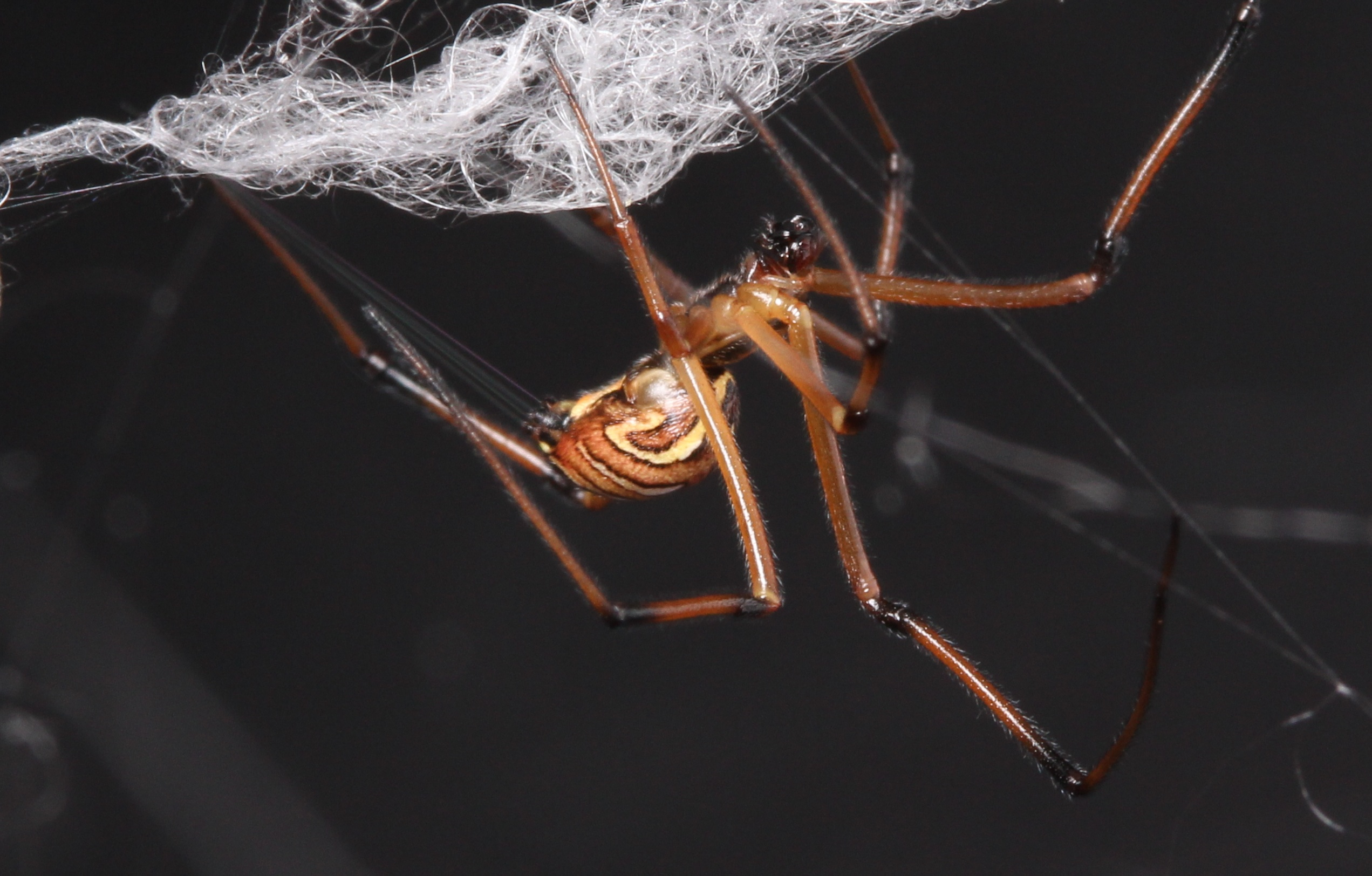
Male black widow (L. hesperus) engaging in silk-wrapping on a female’s web during courtship. Here the male is wrapping a section of web that he has destroyed during web reduction behaviour, which I will discuss in a future post.
We designed an experimental setup to assess male responses to silk pheromones. We constructed this high-tech device out of bamboo barbeque skewers, laboratory labeling tape, and a paper cup filled with floral foam. The skewers form a “T” and at each end of the horizontal arm we slid on little envelopes made of squares of filter paper folded in half and stapled. This simple and inexpensive device was one of the big successes of the project.
The T-rod design makes it easy to compare an individual male’s response to a test stimulus on one side (for example, a female’s silk wrapped around the paper envelope) to a control (blank paper) on the other.
A male spider is introduced at the base of the “T” and climbs up to the top. Once he gets to the intersection, he can decide whether to go left or right. Males almost always began the experiment by investigating both sides of the “T”, but they spent much longer in contact with the silk-wrapped paper than the blank paper. Not only that, but they spent much of their time wrapping the female silk-wrapped paper with silk of their own – obvious courtship behaviour.
Knowing that males would respond to female silk in this way on the T-rod, we were now ready to confirm that the behaviour didn’t depend on the structure of the silk itself, and to see if males would respond to our synthetic candidate pheromone in the same way as they would respond to the real thing.
We prepared female silk extract using methanol as a solvent (this is the same idea as vanilla extract, but instead of extracting the flavour of vanilla beans into ethanol, we extracted the chemicals on the silk into methanol) and applied it to one of the filter papers on the T-rod, and methanol alone to the other.

We tool silk from a glass frame like the one above and submerged it in methanol to extract the pheromones into the liquid, which we then used in behavioural tests.
Males responded in exactly the same way to silk extract as they did to silk itself, spending most of their time on the filter paper impregnated with extract, and wrapping it extensively with silk. Here’s a video showing what that looks like (first at full speed, and then slowed down):
This told us that a pheromone that can be extracted from the silk triggers courtship behaviour, and the structure of the silk itself is not necessary. But when we tested male responses to our candidate pheromone (dissolved in methanol, using methanol alone as a control), things were not so clear-cut. Males spent more time on the pheromone-impregnated paper than methanol alone, but they didn’t prefer it as much as they had preferred the silk extract to methanol. A few males engaged in silk-wrapping when they made contact with our compound, but not the majority, like we had seen for the extract. This means that although our “pheromone” elicited some male activity, by itself it is not enough to consistently trigger courtship behaviour. It seems to be a pheromone component – meaning that the pheromone is a mixture of one or more compounds in addition to the one we identified, and more work will need to be done to figure out what they are.
It would have been nice to be able to say we found the pheromone. But our results suggest that the chemical communication system of black widows is more complicated than we originally thought, and even more fascinating.
In the study that identified the redback pheromone, the researchers measured male activity (the amount of time they spent moving around when in contact with a filter paper impregnated with pheromone), not courtship behaviour. It could be that this pheromone too is only one component of a more complex chemical cocktail. Like our pheromone component, it may be responsible for eliciting searching behaviour, but not quite enough on its own to consistently trigger courtship behaviour by males.
If multiple compounds are involved in these spider pheromones, they might each have different functions. We don’t yet know whether the same pheromone that attracts males is responsible for triggering courtship, or if different compounds provide different kinds of information, about things like a female’s mating status and feeding history. We have learned that the scent-based sexual communication system of black widows is likely more sophisticated than we originally thought, and that there is much more to discover!
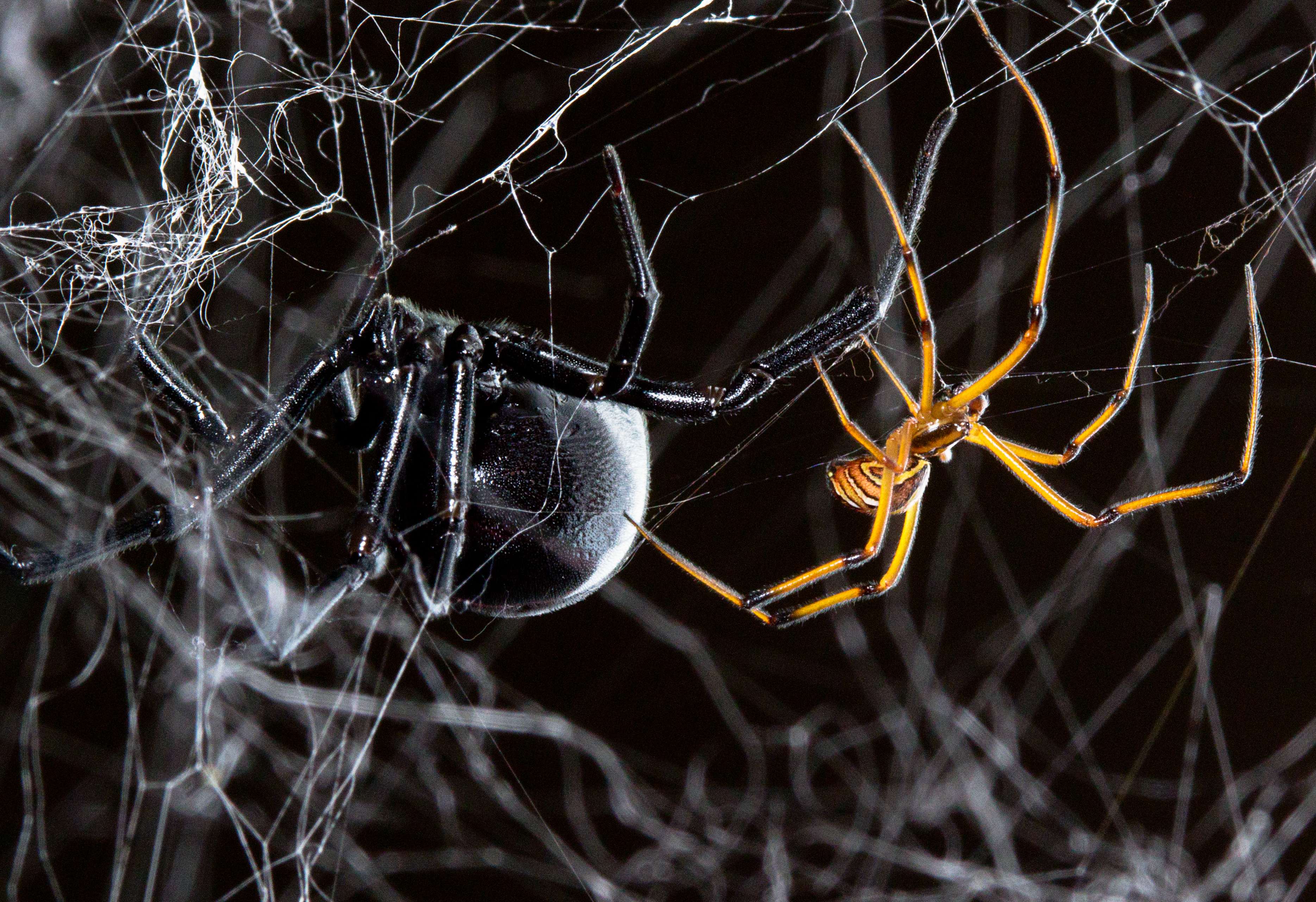
Male and female western black widow on a female’s web.
*Neither the analytical chemistry nor the synthesis of the candidate pheromone were trivial tasks – rather they required the expertise and generous efforts of my very talented coauthors Regine and Grigori. I hope they will forgive me for glossing over the details here!
Here’s the full citation for our paper:
Scott C, McCann S, Gries R, Khaskin G & Gries G. 2015. N-3-Methylbutanoyl-O-methylpropanoyl-L-serine Methyl Ester – Pheromone Component of Western Black Widow Females. Journal of Chemical Ecology. DOI: 10.1007/s10886-015-0582-x
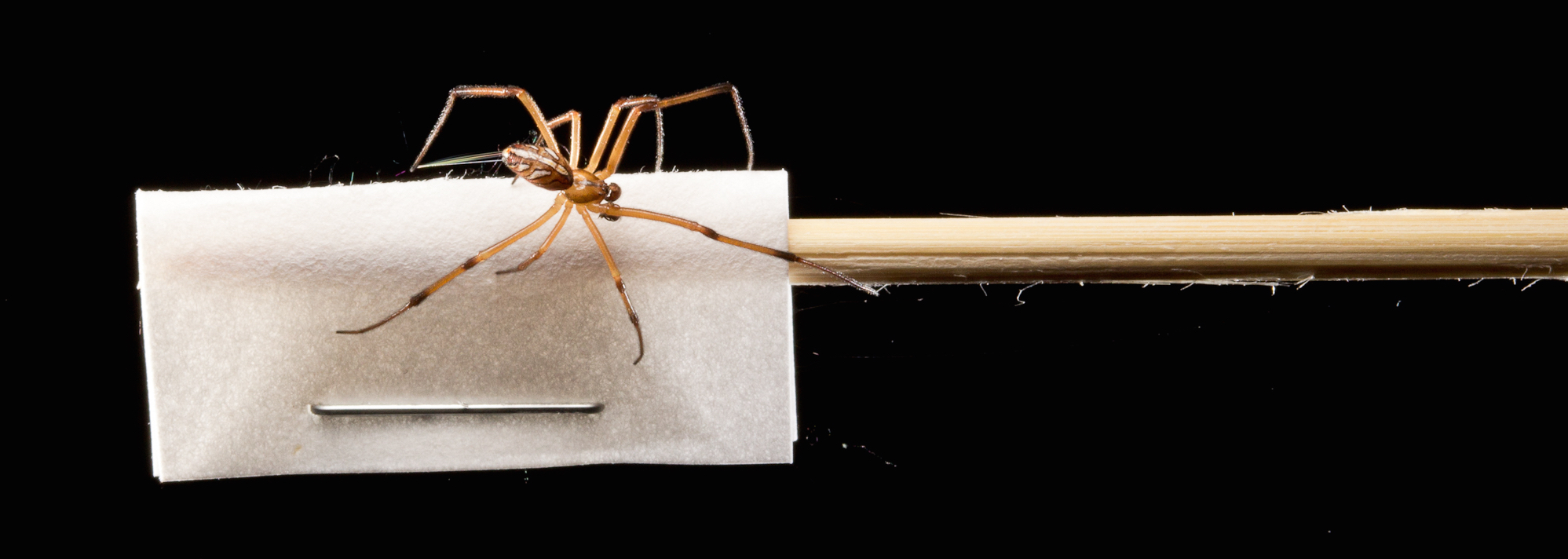


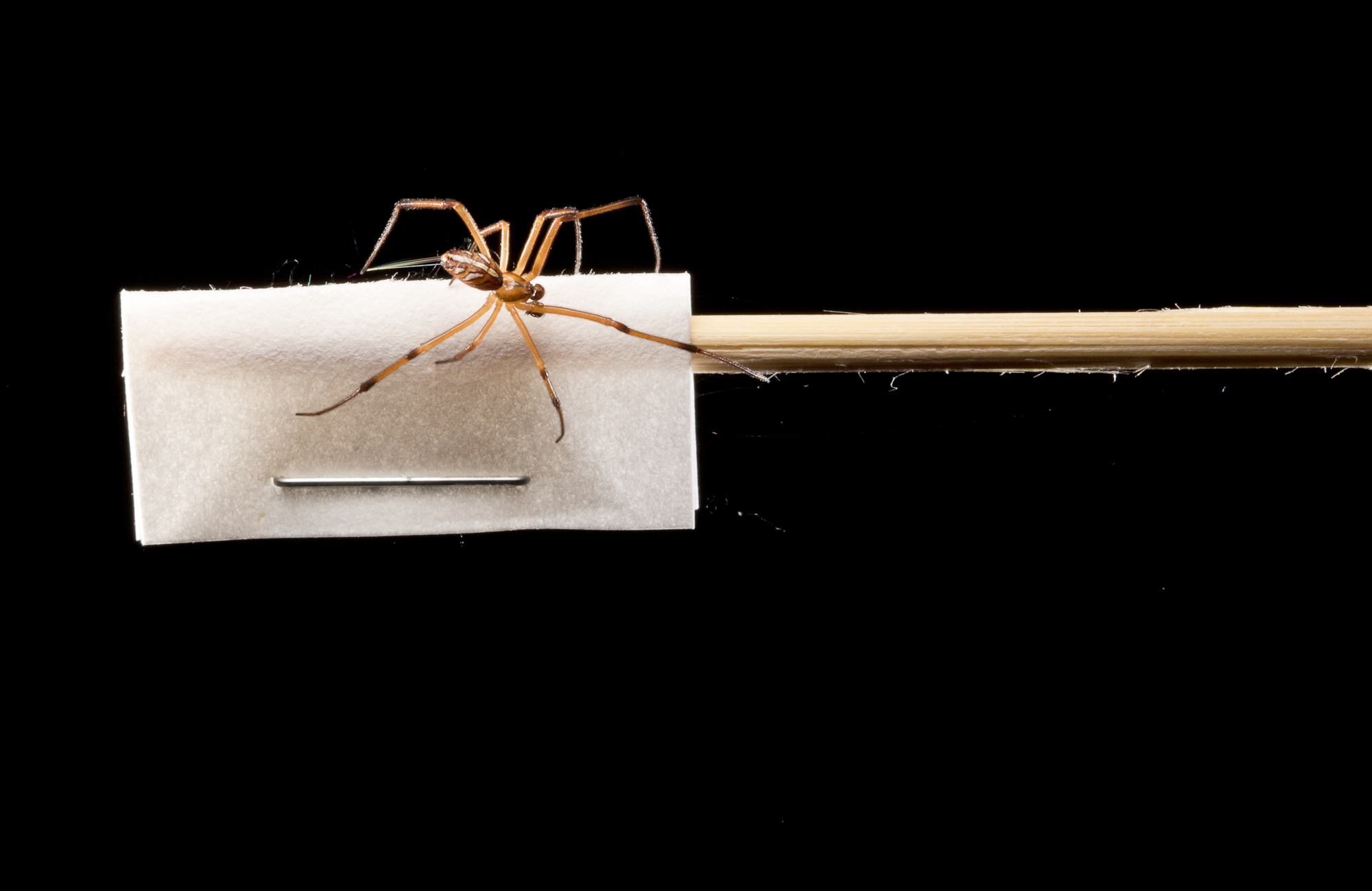
Pingback: Spiderday (the second) | Arthropod Ecology
Pingback: Morsels For The Mind – 15/05/2015 › Six Incredible Things Before Breakfast
Pingback: Web reduction for rival obstruction! | spiderbytes